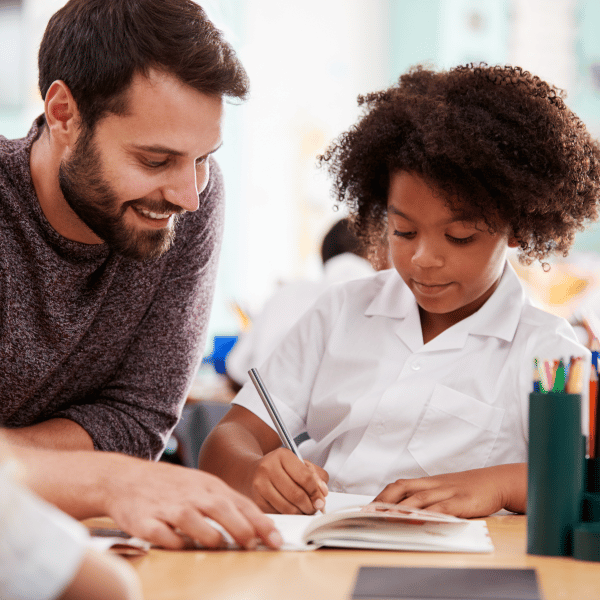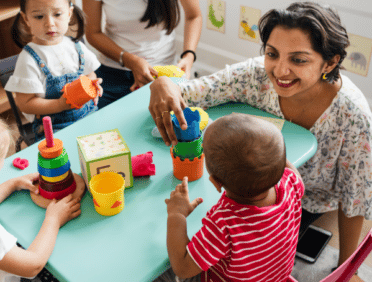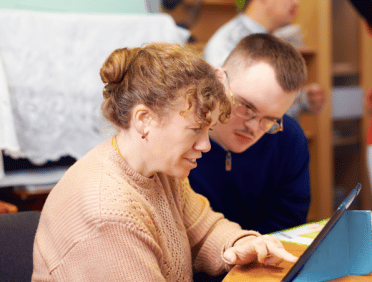The purpose of this guideline is to cover the recognition and response to abuse and neglect in young people and children under the age of 18. The guidelines cover emotional, sexual, and physical abuse, as well as neglect.
The guidelines have been created for anybody who works with children and young people. The information contained within the guidelines is to help people identify signs of neglect and abuse and then know how to respond. These guidelines also support practitioners who have to carry out assessments, provide interventions and support to parents and carers, and help safeguard children and young people.
These guidelines are applicable to any practitioner who works in an environment that brings them into contact with young people and children. This includes people who work in the health and social care settings, the NHS, early years programs, education sectors, voluntary and community sectors, adult services, youth justice services, and the police.
The guidelines also apply to any practitioner who has a specific role in assessing need and risk, as well as the managers of services designed for young people and children.
What is Child Abuse and Neglect?
Child abuse and neglect or two very difficult topics. The first problem we encounter with neglect and child abuse is that there are many different types.
When people think about child abuse, the immediate association is physical abuse. While physical abuse is a disturbing and shocking occurrence, not all signs of child abuse are that obvious.
Ignoring the needs that a child has, putting them in dangerous or unsupervised situations, deliberately damaging their self-esteem or self-worth, or exposing them to sexual situations are all forms of child abuse and neglect. These events can do serious psychological and emotional damage to a child.
The end result of abuse is often serious emotional harm, regardless of what type of abuse takes place.
The Myths and Facts About Child Abuse and Neglect
One of the big problems that we encounter when talking about neglect and child abuse is that there are quite a few misconceptions about what child abuse and neglect actually are. To try and address this, let’s take a look at the myth and then the corresponding fact.
The first myth is that abuse is only considered to be abuse if it is violent. This is not true. Physical abuse is just one example of child abuse. Child neglect, emotional abuse and sexual abuse can all be just as damaging to the child. Because the signs of these types of abuse are not as obvious, it’s often more difficult to notice.
The second myth is that only bad people abuse children. This is not true. Not all abusive guardians or parents intentionally cause harm to their children. Many people have been victims of abuse themselves, and they do not know any other way to handle the situation. Other people may be struggling with substance abuse or mental health issues which affect their judgement or perception of reality.
The third myth is that abuse does not happen in “good“ families. Neglect and abuse can happen in any home in the world. It is not restricted to poor families or bad neighbourhoods. Abuse often crosses every type of economic, cultural, or racial line. It is often the case that a family who seems perfect on the outside may be hiding a dark secret with regards to abuse.
The fourth common myth is that most child abusers are strangers to the child. Sadly, while strangers can be abusive figures for children, the majority of abusers are actually family members or close friends of the family.
The fifth and final common myth is that children who have been abused grow up to become abusive parents themselves. This is not true. While it is statistically more likely for a child to repeat the same abusive cycle as an adult due to their childhood experiences, not all children grow up this way. One of the consequences of growing up in an abusive household is that many children develop a very strong aversion to abuse, and it becomes a powerful motivator to protect their children from harm and to be good parents. It is admirable when children break the cycle of abuse.
It is important to acknowledge that while the prospect of neglect and abuse can occur in any situation, children in certain circumstances are at a greater risk than others.
Domestic violence is a situation that can have substantial impacts on the child. Even if the parent being abused tries to protect the child, there is a possibility for child abuse to occur. The best thing that you can do in that situation would be to leave the relationship.
Parents who drink excessively or consume recreational drugs are more likely to be abusive. They will be unable to care for the children properly, will not be able to make good parenting decisions, and will have a lower level of self-control regarding dangerous impulses.
Parents or guardians suffering from mental illnesses that have not been treated can be at an increased risk of abuse. Parents who are suffering from bipolar disorder, depression, generalised anxiety disorder, or any other form of mental illness may struggle to take care of themselves and their children. A traumatised or mentally ill parent may also be distant towards a child or quick to be angry at them without knowing why.
A lack of parenting skills can be conducive to an abusive environment. There are many parental figures who haven’t learned the skills necessary to be a good parent. Teenage parents often lack realistic expectations and don’t understand the amount of commitment that a child will need. Alternatively, parents who were in abusive homes themselves may struggle to avoid repeating the cycle of abuse because it is all they have experienced.
Finally, stress and a simple lack of a support network can be dangerous. Parenting is a very intensive, stressful task and something that requires a large amount of commitment. Trying to do this without any support and being in a place where you have to navigate the normal financial difficulties and relationship problems of adult life means that lots of parents become abusive as a result of stress and anger.
The Effects of Child Abuse and Neglect
Every type of neglect or abuse leaves a lasting scar on a child. Some of these scars can be physical, but some can be emotional. Emotional scarring has a long, often permanent effect on the life of a child, damaging their sense of self, their ability to function in normal environments, and their future relationships. Let’s look at the effects of neglect and abuse on a child.
The first major impact that neglect and abuse can have on a child is a lack of trust and difficulty forming relationships. Psychology teaches us that the first relationships we form are often parental relationships. These have a substantial impact on the type of relationships we form throughout life. Children who are victims of abuse grow up with a fragmented understanding of what healthy, functional relationships look like. This means that they have difficulty forming and maintaining relationships.
Severe damage to the self-esteem and self-worth of a child is common after abuse. If you spend years telling a child that it is worthless or stupid or no good to anybody, many children struggle to overcome these core feelings of worthlessness. As they grow and mature, they may neglect their education, pursue low-paying jobs, or put up with unhealthy relationships because they don’t believe they are worth anything. Sexual abuse survivors often struggle with the stigma surrounding sexual abuse and grow up feeling damaged.
Finally, children who have been victims of abuse often struggle with emotional regulation. Abused children are not taught how to express emotions due to the circumstances they live in safely. This means that they grow up learning to repress and ignore emotions. Unfortunately, this is not healthy, and survivors of child abuse often struggle with unexplained anger or depression. Many turned to substance abuse as a way to ignore the feelings that they could not deal with.
Part of safeguarding is all about recognising signs of abusive behaviour in parents or guardians. Unfortunately, raising children is one of the greatest challenges in life, and even the most mild-mannered parent or guardian can find themselves at the end of their rope from time to time.
While this is normal, repeated instances of certain behaviour could be an early warning sign that abuse is taking place. Therefore, it’s important to recognise potential signs of abuse in other people.
If a person has noticeable anger management issues, this could be a warning sign that abuse is taking place. People who cannot control their anger often react impulsively under the influence of extreme emotion and regret what they do later, but the cycle repeats.
The parent may talk about feeling emotionally disconnected from the child. If they feel incredibly overwhelmed, they may not want to interact with the child at all and will push it away.
If a parent seems to struggle to meet the daily needs of their child, then they will sometimes unintentionally be abusive. Everybody struggles with this balancing act, but if a parent continually fails in that duty, it may be a sign of abuse waiting to happen.
If other people have expressed concern about the welfare of the child under the care of a guardian, it’s worth paying attention to you. If that person seems to be a trusted and respected figure within the community, it might be worth listening to what they have to say.
It’s important to recognise that there are different types of child abuse and neglect. Let’s take a look at each one.
Physical Abuse
Physical abuse is all about causing physical injury or harm to a child, which can be the result of either excessive physical punishment or a deliberate attempt to hurt a child.
Physical abuse is a complex problem because the child will often not know what causes the assault, the parent will lash out when they are angry, and fear will be used as a way to control behaviour.
Emotional Abuse
Emotional abuse is all about intentionally damaging the social development or mental health of a child through words. Humiliation, insults, attacking self-esteem, or frequent threats are all indicators of emotional abuse. Also, limiting the physical contact that you have with a child as a form of punishment is emotional abuse.
Sexual Abuse
Sexual abuse is a very complicated situation because there are multiple ways that can manifest. Sexual abuse does not involve direct contact all the time. Exposing a child to sexually abusive material or sexual situations is still considered to be abuse.
Child neglect
Child neglect is defined to be the pattern of failing to provide the basic needs of a child, which include clothing, hygiene, food, and supervision.
Peer-on-Peer Abuse
Peer-on-peer abuse is considered to be abusive behaviour committed against a child by another child. This can either be an independent decision made by the child or something which has been encouraged by a parent or guardian.
Warning Signs of Abuse
The warning signs that abuse is taking place will vary according to the type of abuse being inflicted.
Emotional Abuse
Children suffering from emotional abuse may be anxious, withdrawn or fearful. They may demonstrate extreme behaviour and display a lack of attachment to the caregiver or parent.
Physical Abuse
Children suffering from physical abuse may have unexplained injuries that occur frequently. They may be tense and constantly watchful of adults. They may flinch at a sudden movement and wear inappropriate clothing to cover up signs of injury.
Child Neglect
Children suffering from child neglect may be wearing inappropriate clothing for the weather that is dirty and unwashed. They may have consistently bad hygiene, untreated illnesses, and frequently be absent from school.
Sexual Abuse
Children suffering from sexual abuse may have trouble walking, demonstrate knowledge of a sexual activity that is inappropriate for their age, and make a strong effort to avoid a particular person without a clear reason. They may also try to run away from home, have an STD under the age of 14, and may not wish to participate in physical activity at school.
Reporting Neglect and Abuse to the Local Authority
As a professional working with children and young people, you have a responsibility to report abuse and neglect to the local authority. Obviously, you will do this by voicing your concerns to a colleague or manager, who will then report up to the next relevant authority above them, and so on.
What Will the Local Authority Do?
The local authority is obligated to conduct an investigation into the situation to determine if abuse is taking place.
You may be asked to repeat your concerns to a member of the local authority, as well as relevant healthcare services and the police. In the event that abuse is taking place and legal action occurs, you may be asked to testify as a witness. It will depend entirely on the situation.
If any member of your team requires training in safeguarding and recognising abuse and neglect, LearnQ can help. We have a broad range of different training services available and are very comfortable training large groups. This kind of training is vital for safeguarding and protecting children, so it’s important to have adequate knowledge.
To download a .pdf of this blog, please click here












